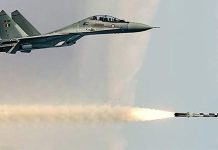North Korea has a fleet of about 150 MiG-21 and MiG-21BiS jet fighters.
The North Korean Air Force is in service with more than 500 military aircraft of all kinds. Primarily obsolete Soviet-era aircraft, the North Korean Air Force is without a doubt an amazing ability to keep many of the older generation fighters in service. North Korea has a fleet of about 150 MiG-21 and MiG-21BiS jet fighters. Although representing a relatively obsolete fighter class abroad, the third generation MiG-21BiS single-engine fighter has a prominent place in the Korean People’s Army Air Force.

Under Western pressure and sanctions banning arms sales to the country, the acquisition of the MiG-21BiS is one of the few successes North Korea has had in acquiring new fighter jets since the late Soviet era. After the breakup of the Soviet Union, the MiG-21BiS was quickly decommissioned throughout the Soviet successor states as all radically downsized their air forces. North Korea has sought to acquire 133 airframes from Kazakhstan, which would have nearly doubled the size of its MiG-21 fleet when serving alongside older variants.
The MiG-21BiS’s advantages aside from its avionics included deployment of new R-60 missiles, integration of a more powerful R-25 engine, and use of four wing hard points instead of two that older variants were limited to. North Korean pilots have a lot of experience with MiG-21s. They flown extensively for the North Vietnamese Air Force in air defence roles against U.S. bombers, as well as for Egypt and Syria against the U.S.-supplied Israeli Air Force during the 1960s and 70s.
Plans for acquisitions from Kazakhstan faced significant difficulties due to pressure from the United States not to sell arms to North Korea, due to Washington and Pyongyang remaining technically at war. A covert arms deal for 40 fighters was nevertheless signed for just $8 million – or $200,000 per aircraft, with estimates for the number of MiG-21BiS fighters delivered before the deal was derailed ranging from 30-38 aircraft.
The MiG-21BiS remains the third most capable fighter class in the North Korean fleet other than the MIG-23 and MiG-29, and has a respectable flight performance speed and operational altitude although it is let down by the age of its armaments. Upgrades are thought to be ongoing, however, with many MiG-21s including older variants having integrated multi function cockpit displays and new communications equipment.

MiG-21BiS pilots also began sporting new helmets and flight suits around 2015, while a range of indigenous air to ground munitions including bombs and anti tank guided missiles have been produced in the country such as the AGP-250 GNSS guided glide bomb. These are thought to have been integrated into several MiG-21 units.
North Korea has also developed formidable indigenous electronic warfare systems, with its TACAN system exported to Syria was tested onboard a Mi-17 helicopter where it proved effective against new Russian Pantsir-S1 air defence systems. Such systems could potentially make the MiG-21BiS fleet significantly more dangerous much as new electronic warfare suites did for the Indian models.
North Korea’s MiG-21BiS fleet nevertheless lacks access to more modern air to air missiles such as the R-77 and R-73 used on Indian variants, with this potentially being a next step for the country’s defence sector to modernise all fighter classes due to an inability to import air launched weapons from abroad.






















